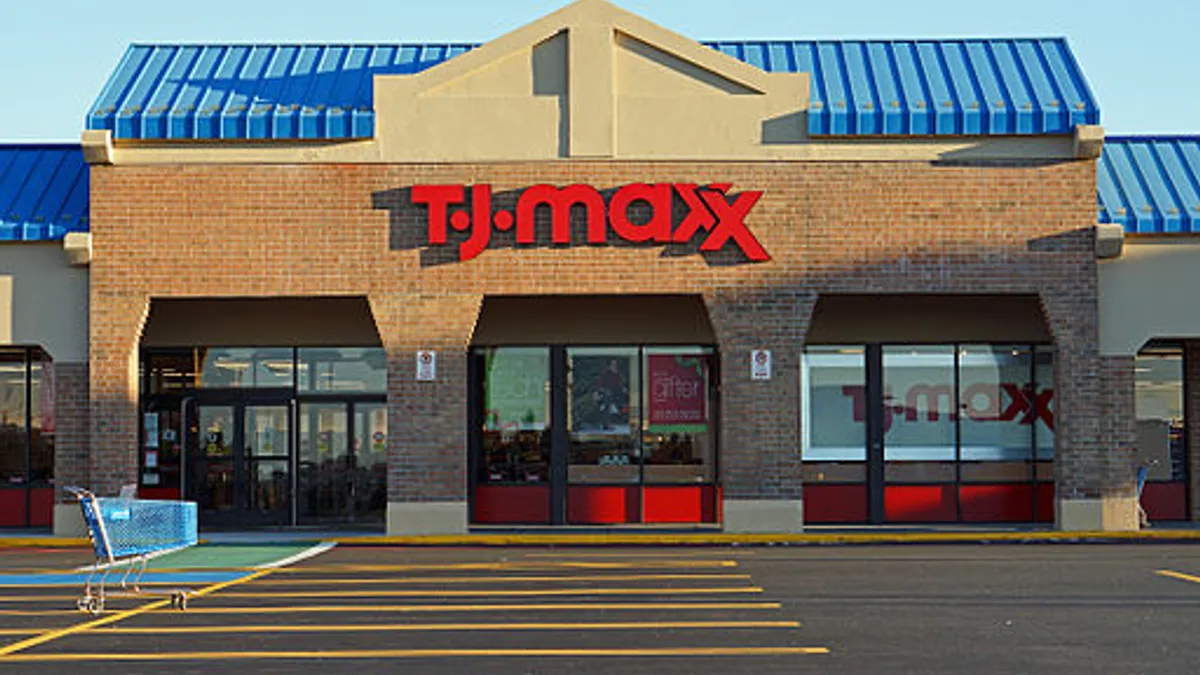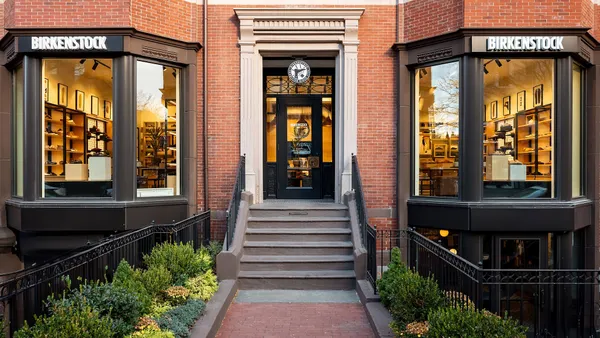Dive Brief:
- TJX Cos. on Tuesday reported first quarter net sales of $8.7 billion, a 12% increase from the year-ago period. The off-price retailer's comparable store sales increased 3% in the quarter, with a 4% increase in the company's Marmaxx (composed of T.J. Maxx and Marshalls stores) comparable sales, according to a press release. Comps rose 2% in the retailer's HomeGoods unit, 3% in its Canadian unit and 1% in its international unit.
- TJX's sales beat by $200 million the FactSet analyst consensus estimate, cited by MarketWatch, of $8.5 billion, and the companies comps beat the consensus by 0.5%. However, the retailer's earnings per share of 96 cents, which excluded a 17 cent tax attributed to last year's tax bill, fell short of the $1.02 FactSet consensus.
- CEO and President Ernie Herrman said in a statement that customer traffic drove the sales gains. "We are convinced that we will continue to gain market share and grow successfully around the world," he said. Executives raised the high end on their earnings guidance by 2 cents per share, to $4.83, a potential 20% increase over the previous year's earnings. In Q1, the retailer gave $597 million to stockholders in the form of stock buybacks and dividends.
Dive Insight:
After a rare hiccup in the third quarter last year, TJX is back at doing what it does best, growing sales at rates that make a joke out of the talk about the "retail apocalypse" and death of brick and mortar.
The period that ended May 5 follows a Q4 that saw TJX's top-line sales expand by 16% and comps increase 4%.
After a "fashion misstep" at T.J. Maxx and Marshall's in Q3 last year — that helped drag down comps to negative 1% in the unit — Cowen analyst Oliver Chen said in a February note that his team thought the problem was "largely fixed," with Cowen's consumer tracker pointing to rising visit trends to the retailer's stores.
As for its solid Q1 performance, Managing Director of GlobalData Retail Neil Saunders said in emailed comments that sales growth in the company's older brands "gives us confidence that the brands still have some more runway — especially in terms of capturing new customers — without the need to open more stores or grow digitally."
Looking ahead, some analysts worry that TJX and other off-price sellers might suffer as consumers, confident in the economy, trade up in their purchases and as the furious expansion by TJX, Ross and others catches up with them.
But Morgan Stanley analysts in a December report wrote that they expect off-price sales to keep growing. They noted that despite good economics for consumers, shoppers are still saving more as well as spending more on experiences than on retail goods. Moreover, profits in the sector are better protected from e-commerce expenses that department and specialty stores have been taking on lately as they try to compete with Amazon online.
Moody's Investors Service has also written that the discovery inherent in off-price shopping will continue to fuel off-price retail, which will see operating income growth of 5.4%, besting most of the overall sector. And analysts with JP Morgan wrote last year that they estimate off-price retailers could generate another $19 billion in incremental sales by 2021.
This article has been updated to clarify TJX's earnings per share calculations.












